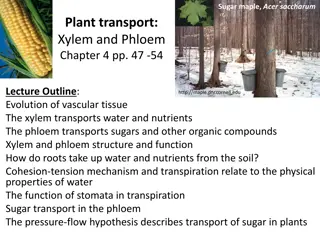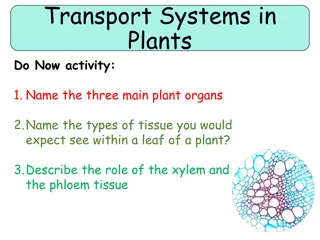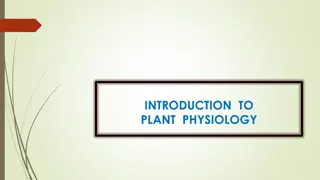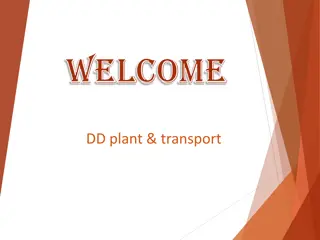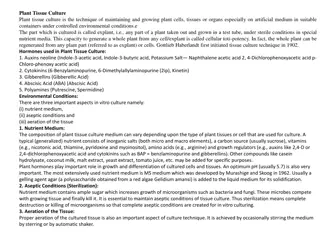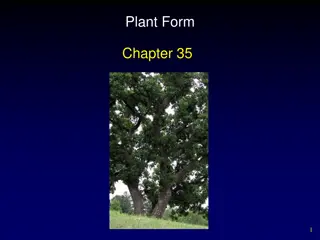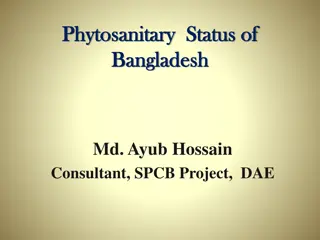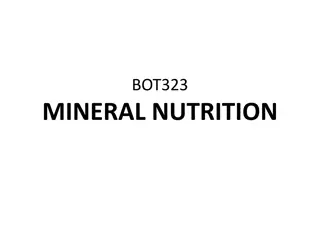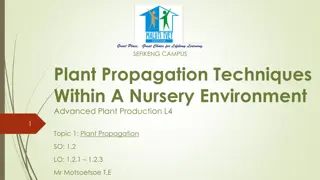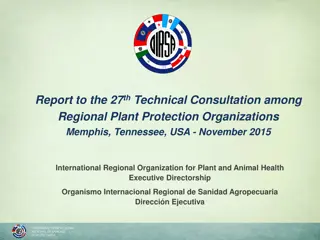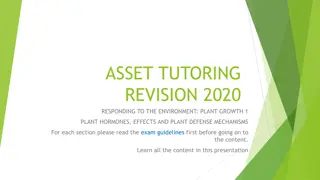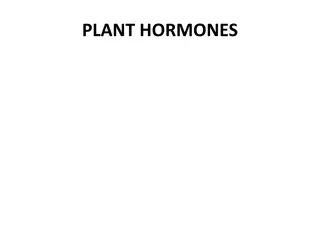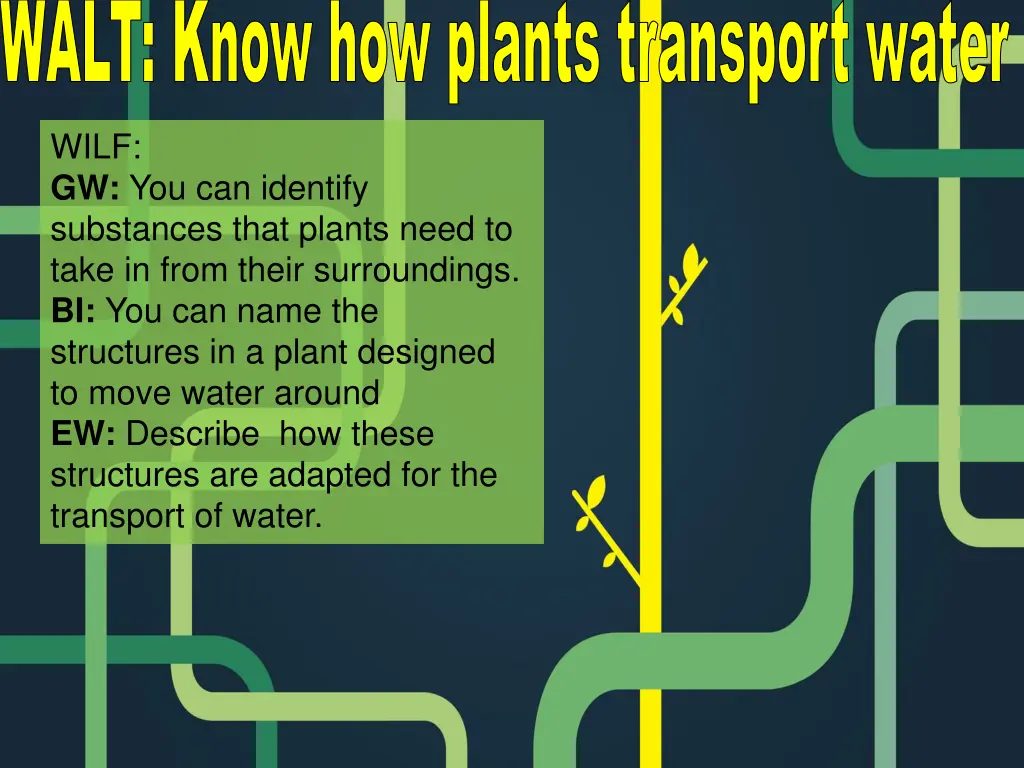
Understanding Plant Water Transport Mechanisms
Explore how plants transport water, identifying necessary substances and structures involved. Discover the adaptations in plant roots, root hairs, trunks, and stems for efficient water movement. Engage in microscopic observation to study root hair cells. Gain insights into the intricacies of plant plumbing.
Download Presentation

Please find below an Image/Link to download the presentation.
The content on the website is provided AS IS for your information and personal use only. It may not be sold, licensed, or shared on other websites without obtaining consent from the author. If you encounter any issues during the download, it is possible that the publisher has removed the file from their server.
You are allowed to download the files provided on this website for personal or commercial use, subject to the condition that they are used lawfully. All files are the property of their respective owners.
The content on the website is provided AS IS for your information and personal use only. It may not be sold, licensed, or shared on other websites without obtaining consent from the author.
E N D
Presentation Transcript
WALT: Know how plants transport water Plumbing Plants WILF: GW: You can identify substances that plants need to take in from their surroundings. BI: You can name the structures in a plant designed to move water around EW: Describe how these structures are adapted for the transport of water.
Thinking....... Which substances might plants need to take in from their surroundings? What kind of structures/features might a plant s body need to have in order to take in or move around the substances it needs.
GIANT REDWOOD TREES How does water get to the leaves?
Plant roots Just with the naked eye, you can see how the roots are adapted to collect substances. > Describe what you can see and how this helps.
Root hairs If you look more closely at the roots of some plants, you can sometimes see that they look furry . What do you think this fur is?
Observing plant roots using a microscope 1) Carefully collect a microscope and carry it back to your desk. 2) Collect a glass microscope slide. 3) Very carefully come and pull a single cress plant out of the container, trying hard not to snap the roots off. 4) Place the plant onto the glass slide and place onto the stage. 5) Focus the microscope and observe carefully. Draw a pencil diagram of what you can see. Remember the rules about drawing microscopy diagrams!!
These are called Root hair cells they are made of just a single cell.
Trunks and stems Once water has been taken in by the roots, it must be transported. What do you think the insides of the trunks and stems of plants contain?
To do: Cut a slice off your piece of celery that has been put into ink. Take care to do this on the cutting tile. With a pencil, draw a half- page diagram of the celery stem. Can you label what you can see? Describe what you can see.
What did you see? Only these parts of the stem are hollow to allow substances to pass along them. Why hasn t the rest of the stalk turned the colour of the dye?
If we zoom in further, we can see the individual tubes. They are made out of hollow cells called Xylem cells Cell wall made out of cellulose Rings of woody material called Lignin this strengthens the cell.
The dye will eventually reach the leaves and tint them slightly.
Predict the results of this practical and explain why you made your prediction.
Vine of Ivy Leaves Plant plumbing. Plants take in _______ through the ________ which extend into the ________. The roots have tiny little _______ on their surface to get between the ______ particles and so that the roots have a bigger _______ to take in ______. soil hairs water roots surface water soil Once the _______ have taken in the water, it is carried up to the ________ by tiny tubes that we find in the _______. These are called _______ tubes made out of ________ which are _________. Leaves roots cells xylem stem hollow
Extension task Imagine you are a tiny water droplet in the soil. Describe your journey into a plant and up to the leaves where you are used during photosynthesis. You could add pictures and set it out like a cartoon strip. Key words to include: Xylem tubes Root hair cell Chloroplasts Leaf Palisade cells carbon dioxide photosynthesis Glucose

